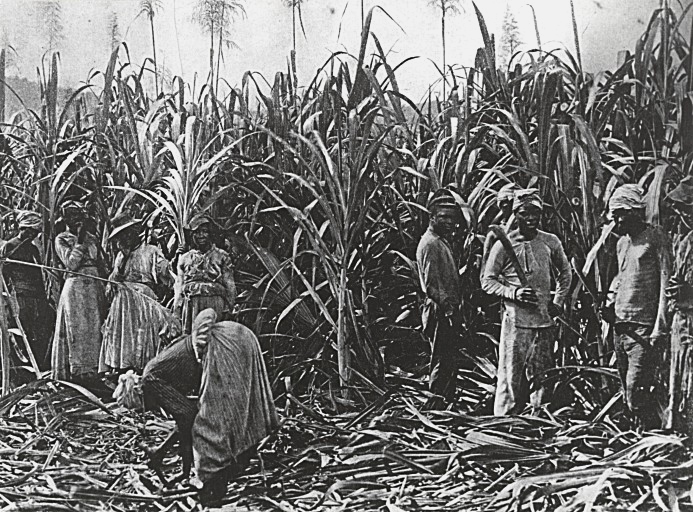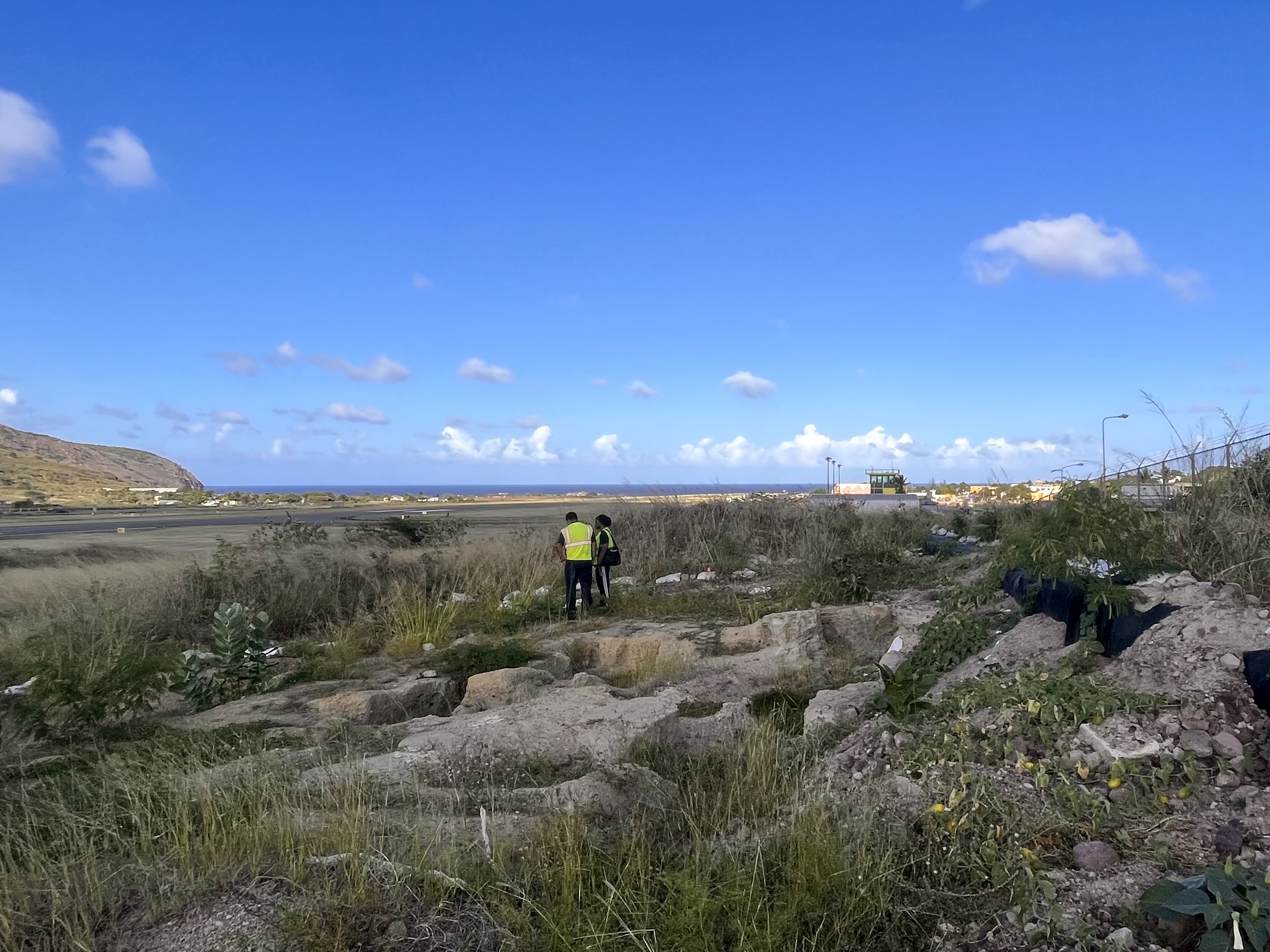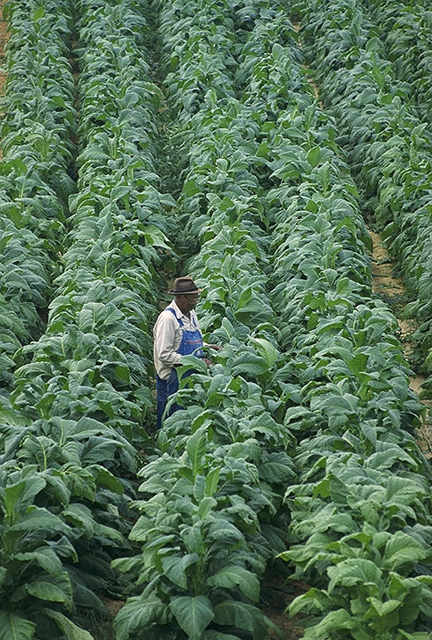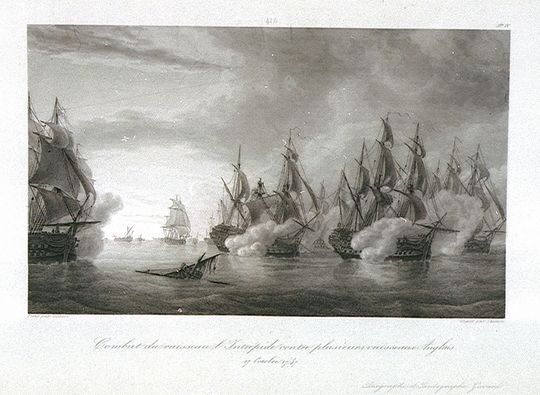|
Plantations Of Sint Eustatius
The plantations of Sint Eustatius (Dutch Caribbean) were primarily set up in the seventeenth and eighteenth centuries by European settlers. Workers on the plantations were obtained from human trafficking, and the proceeds primarily went back to the mother country. In the second half of the eighteenth century, trade became more of a priority to Sint Eustatius rather than the plantation economy. History The colonization of Sint Eustatius began in 1635 by Jan Snouck and other Zeelanders. In 1682, the island was sold to the Dutch West India Company (WIC), which owned it until its abolition in 1792. The patronage was in the hands of a group of merchants from Zeeland, the Netherlands, including Abraham van Peere and Pieter van Rhee. The first tobacco of Sint Eustatius was introduced on the market in Vlissingen in 1638. Around 1689, many plantation owners moved away due to repeated destruction and looting during takeovers by other colonial powers, often to nearby Saint Thomas. The plant ... [...More Info...] [...Related Items...] OR: [Wikipedia] [Google] [Baidu] |
Golden Rock African Burial Ground
The Golden Rock African Burial Ground is an unmarked historical burial ground of enslaved African men, women and children located on the premises of the airport on Sint Eustatius, Dutch Caribbean in the ‘Cultuurvlakte’. The burial ground was part of the former Golden Rock plantation on the island. History Sint Eustatius was an important transit port in the trans-Atlantic slave trade due to its strategic location, deep harbor and system of free trade. The small island played a significant role in the transshipment of captured Africans to the British, French, and Spanish islands of the eastern Caribbean. There was no large plantation economy, but in the eighteenth century there were as many as 75 plantations on the island. The Golden Rock Plantation was one of the largest plantations of Sint Eustatius centrally located in between two elevated areas, Signal Hill and Little Mountain to the northwest and a dormant volcano, the Quill to the southeast. The name Golden Rock is deriv ... [...More Info...] [...Related Items...] OR: [Wikipedia] [Google] [Baidu] |
Saladoid
The Saladoid culture is a pre-Columbian indigenous culture of territory in present-day Venezuela and the Caribbean that flourished from 500 BCE to 545 CE. The Saladoid were an Arawak people. Concentrated along the lowlands of the Orinoco River, the people migrated by sea to the Lesser Antilles, and then to Puerto Rico."Prehistory of the Caribbean Culture Area" Southeast Archaeological Center, National Park Service (retrieved 19 July 2013) Name This cultural classification comes from adding the suffix "oid" to the sites where these unique pottery styles were first recognised; thus the name Saladoid, from name of the modern settlement of Saladero, is used by archaeologists to identify the peoples of the early ceramic age.Chronology The Saladoid period include ...[...More Info...] [...Related Items...] OR: [Wikipedia] [Google] [Baidu] |
Godet African Burial Ground
The Godet African Burial Ground is an unmarked historical burial ground for enslaved African men, women and children located at the southwest coast of Sint Eustatius, Dutch Caribbean. The burial ground was part of the former Godet plantation on the island. The Godet plantation There was no large plantation economy on the island, yet by 1750 there were 76 plantations. The burial ground was part of the former Godet Plantation. Plantation buildings are often depicted on maps, sometimes including the housing for the enslaved people. The burial grounds of the enslaved people are, however, seldom marked. It seems that the enslaved people were allowed to bury their dead at the least profitable ground or waste land of the plantations. The location of the Godet Afrikan Burial Ground is a good example of this as it is situated at the edge of a cliff. Location near the Waterfort The Godet African Burial Ground is located just north of the fortress Amsterdam also known as the Waterfort. ... [...More Info...] [...Related Items...] OR: [Wikipedia] [Google] [Baidu] |
Atlantic Slave Trade
The Atlantic slave trade, transatlantic slave trade, or Euro-American slave trade involved the transportation by slave traders of enslaved African people, mainly to the Americas. The slave trade regularly used the triangular trade route and its Middle Passage, and existed from the 16th to the 19th centuries. The vast majority of those who were transported in the transatlantic slave trade were people from Central and West Africa that had been sold by other West Africans to Western European slave traders,Thornton, p. 112. while others had been captured directly by the slave traders in coastal raids; Europeans gathered and imprisoned the enslaved at forts on the African coast and then brought them to the Americas. Except for the Portuguese, European slave traders generally did not participate in the raids because life expectancy for Europeans in sub-Saharan Africa was less than one year during the period of the slave trade (which was prior to the widespread availability of qu ... [...More Info...] [...Related Items...] OR: [Wikipedia] [Google] [Baidu] |
Dominica
Dominica ( or ; Kalinago: ; french: Dominique; Dominican Creole French: ), officially the Commonwealth of Dominica, is an island country in the Caribbean. The capital, Roseau, is located on the western side of the island. It is geographically situated as part of the Windward Islands chain in the Lesser Antilles archipelago in the Caribbean Sea. Dominica's closest neighbours are two constituent territories of the European Union, the overseas departments of France, Guadeloupe to the northwest and Martinique to the south-southeast. Dominica comprises a land area of , and the highest point is Morne Diablotins, at in elevation. The population was 71,293 at the 2011 census. The island was settled by the Arawak arriving from South America in the fifth century. The Kalinago displaced the Arawak by the 15th century. Columbus is said to have passed the island on Sunday, 3 November 1493. It was later colonised by Europeans, predominantly by the French from the 1690s to 1763. Th ... [...More Info...] [...Related Items...] OR: [Wikipedia] [Google] [Baidu] |
Indigenous Peoples
Indigenous peoples are culturally distinct ethnic groups whose members are directly descended from the earliest known inhabitants of a particular geographic region and, to some extent, maintain the language and culture of those original peoples. The term ''Indigenous'' was first, in its modern context, used by Europeans, who used it to differentiate the Indigenous peoples of the Americas from the Europeans, European settlers of the Americas and from the African diaspora, Sub-Saharan Africans who were brought to the Americas as Slavery, enslaved people. The term may have first been used in this context by Thomas Browne, Sir Thomas Browne in 1646, who stated "and although in many parts thereof there be at present swarms of ''Negroes'' serving under the ''Spaniard'', yet were they all transported from ''Africa'', since the discovery of ''Columbus''; and are not indigenous or proper natives of ''America''." Peoples are usually described as "Indigenous" when they maintain traditions ... [...More Info...] [...Related Items...] OR: [Wikipedia] [Google] [Baidu] |
Suriname
Suriname (; srn, Sranankondre or ), officially the Republic of Suriname ( nl, Republiek Suriname , srn, Ripolik fu Sranan), is a country on the northeastern Atlantic coast of South America. It is bordered by the Atlantic Ocean to the north, French Guiana to the east, Guyana to the west, and Brazil to the south. At just under , it is the smallest sovereign state in South America. It has a population of approximately , dominated by descendants from the slaves and labourers brought in from Africa and Asia by the Dutch Empire and Republic. Most of the people live by the country's (north) coast, in and around its capital and largest city, Paramaribo. It is also one of the least densely populated countries on Earth. Situated slightly north of the equator, Suriname is a tropical country dominated by rainforests. Its extensive tree cover is vital to the country's efforts to mitigate climate change and maintain carbon negativity. A developing country with a relatively high ... [...More Info...] [...Related Items...] OR: [Wikipedia] [Google] [Baidu] |
Plantation Economy
A plantation economy is an economy based on agricultural mass production, usually of a few commodity crops, grown on large farms worked by laborers or slaves. The properties are called plantations. Plantation economies rely on the export of cash crops as a source of income. Prominent crops included cotton, rubber, sugar cane, tobacco, figs, rice, kapok, sisal, and species in the genus '' Indigofera'', used to produce indigo dye. The longer a crop's harvest period, the more efficient plantations become. Economies of scale are also achieved when the distance to market is long. Plantation crops usually need processing immediately after harvesting. Sugarcane, tea, sisal, and palm oil are most suited to plantations, while coconuts, rubber, and cotton are suitable to a lesser extent. Conditions for formation Plantation economies are factory-like, industrialised and centralised forms of agriculture, owned by large corporations or affluent owners. Under normal circumstances, plantati ... [...More Info...] [...Related Items...] OR: [Wikipedia] [Google] [Baidu] |
George Brydges Rodney, 1st Baron Rodney
Admiral George Brydges Rodney, 1st Baron Rodney, KB ( bap. 13 February 1718 – 24 May 1792), was a British naval officer. He is best known for his commands in the American War of Independence, particularly his victory over the French at the Battle of the Saintes in 1782. It is often claimed that he was the commander to have pioneered the tactic of breaking the line. Rodney came from a distinguished but poor background, and went to sea at the age of fourteen. His first major action was the Second Battle of Cape Finisterre in 1747. He made a large amount of prize money during the 1740s, allowing him to purchase a large country estate and a seat in the House of Commons of Great Britain. During the Seven Years' War, Rodney was involved in a number of amphibious operations such as the raids on Rochefort and Le Havre and the Siege of Louisbourg. He became well known for his role in the capture of Martinique in 1762. Following the Peace of Paris, Rodney's financial situat ... [...More Info...] [...Related Items...] OR: [Wikipedia] [Google] [Baidu] |



.jpg)

